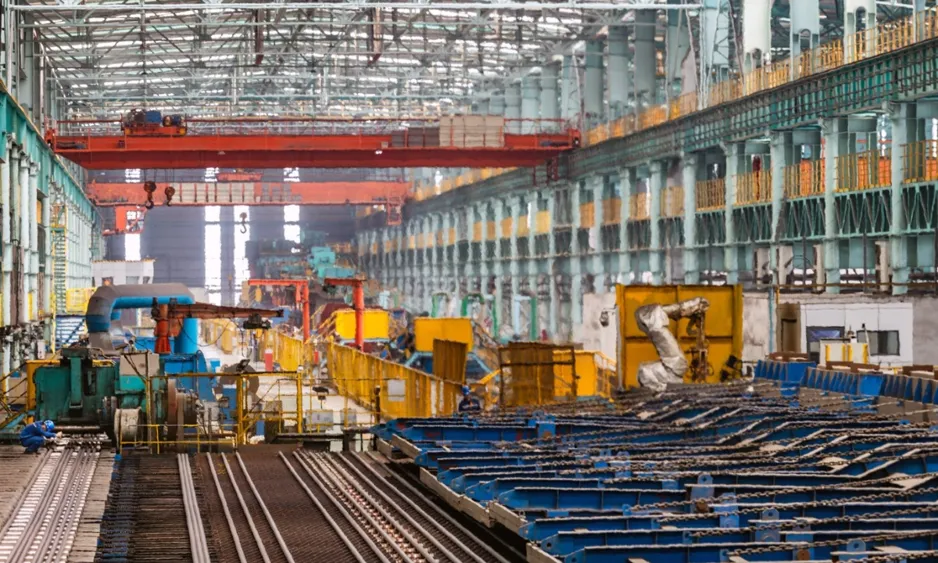US Expands Steel and Aluminum Tariffs by 407 Products

The United States has announced a significant expansion of tariffs on steel and aluminum products, targeting an additional 407 items. This move raises alarms concerning the implications for global supply chains and the impact on various sectors within U.S. industries.
The newly included products span a wide array of sectors, including wind turbines and their components, mobile cranes, bulldozers, railcars, furniture, compressors, and pumps, as stated by the Department of Commerce (DOC) on its official platform.
Under Secretary of Commerce for Industry and Security Jeffrey Kessler emphasized that this expansion is aimed at both broadening the scope of the tariffs and preventing circumvention of existing duties. The overarching goal is to bolster the revival of the American steel and aluminum sectors.
Importantly, the updated tariff list also encompasses critical components for automotive exhaust systems and electric vehicles, including electrical steel necessary for EV production, along with parts for buses and other electrical appliances.
In response to these changes, a coalition of foreign automakers has urged the DOC to reconsider including specific parts, arguing that the U.S. currently lacks the domestic capacity to meet existing demand. Notably, Tesla has pinpointed concerns regarding the inclusion of steel used in EV motors and wind turbines, asserting that there is insufficient U.S. capacity to produce the necessary steel.
Experts have expressed that the latest tariff escalation seems to reflect Washington's perception of inadequate safeguards for its domestic steel and aluminum industries. This shift is seen as Washington's attempt to shield its industries amid intensifying global production competition.
Nonetheless, analysts like Zhou Mi from the Chinese Academy of International Trade and Economic Cooperation, point out that numerous newly listed goods are primarily produced in China, which maintains a strong global position in those sectors.
Zhou highlighted that it would be unrealistic for the U.S. to rapidly enhance its domestic production capacity to match that of China's, leading to an inevitable price increase on exports to the U.S. as tariffs are imposed.
The immediate repercussions may not solely jeopardize market share for Chinese exporters but may also reshape pricing strategies, compelling exporters and U.S. buyers to renegotiate how they will absorb the increased costs.
Zhou further warned that these tariff expansions could disrupt global supply chains and present considerable challenges to downstream industries in the U.S. The added costs may put increasing pressure on American project developers and infrastructure investors, potentially leading to broader uncertainties in supply chain stability.
Critics of the U.S. tariffs, including He Yongqian from the Chinese Ministry of Commerce, labeled these incremental rises as unilateral and protectionist. Many countries have voiced their dissent, as evidenced by a World Trade Organization (WTO) panel's previous ruling that U.S. Section 232 tariffs on steel and aluminum were inconsistent with WTO regulations.
Read These Next

Southern Mining Group Shareholders to Cut Holdings
Nanmeng Group's execs Gong Youliang and Liu Min plan to reduce shares by 1% and 0.63% for personal needs.

Xiamen TEBIO Board Meeting: Transparency and Risks Insight
This commentary reviews the recent meeting of the Supervisory Board of Xiamen TEBIO Co., Ltd., focusing on the approval of their half-year financial report for 2025 and its significance in the context of corporate governance and market dynamics.

FDA Approves Signos Glucose Monitor for Weight Loss
The FDA's approval of Signos' glucose monitoring system aimed at weight loss signifies a transformative step in accessible obesity interventions. This allows a broader demographic to engage in weight management without strict eligibility criteria around obesity. The system, leveraging AI and continuous glucose monitoring, is pitched as a more affordable alternative to traditional medications, yet hurdles remain in terms of insurance coverage and regulatory acceptance.
